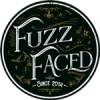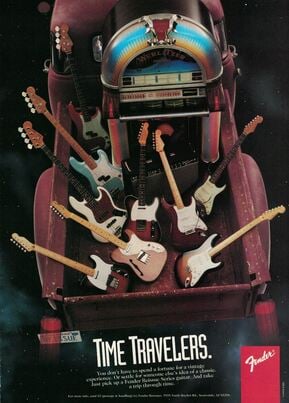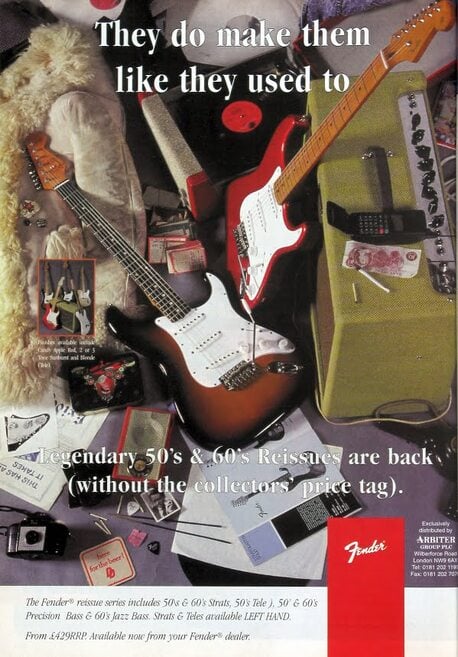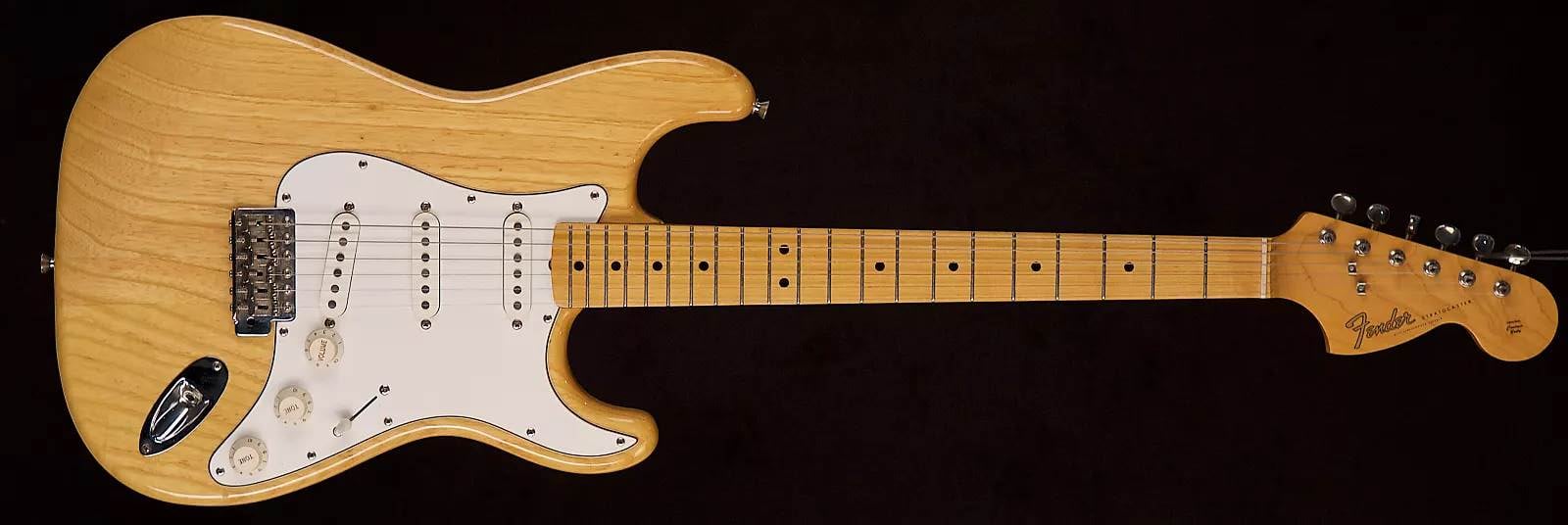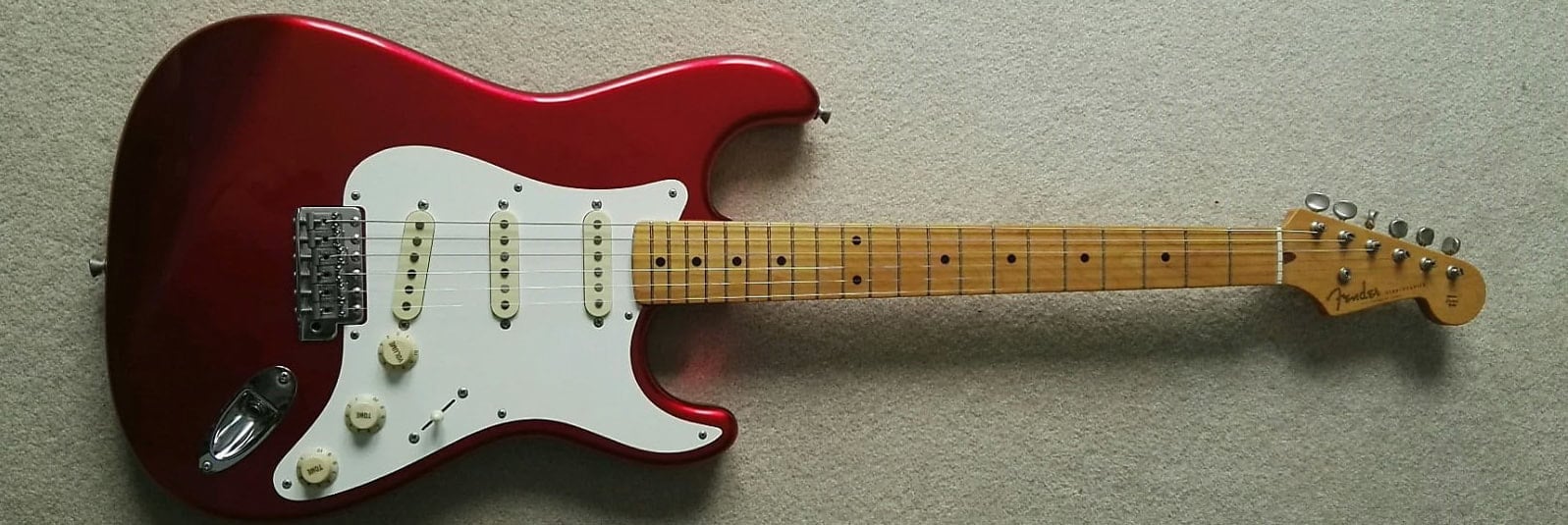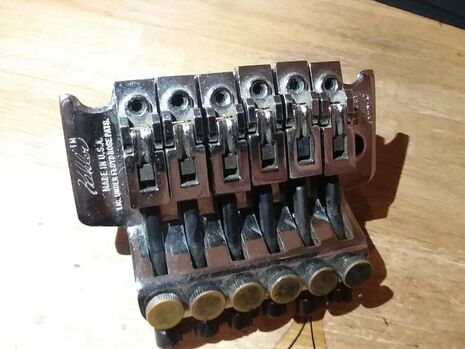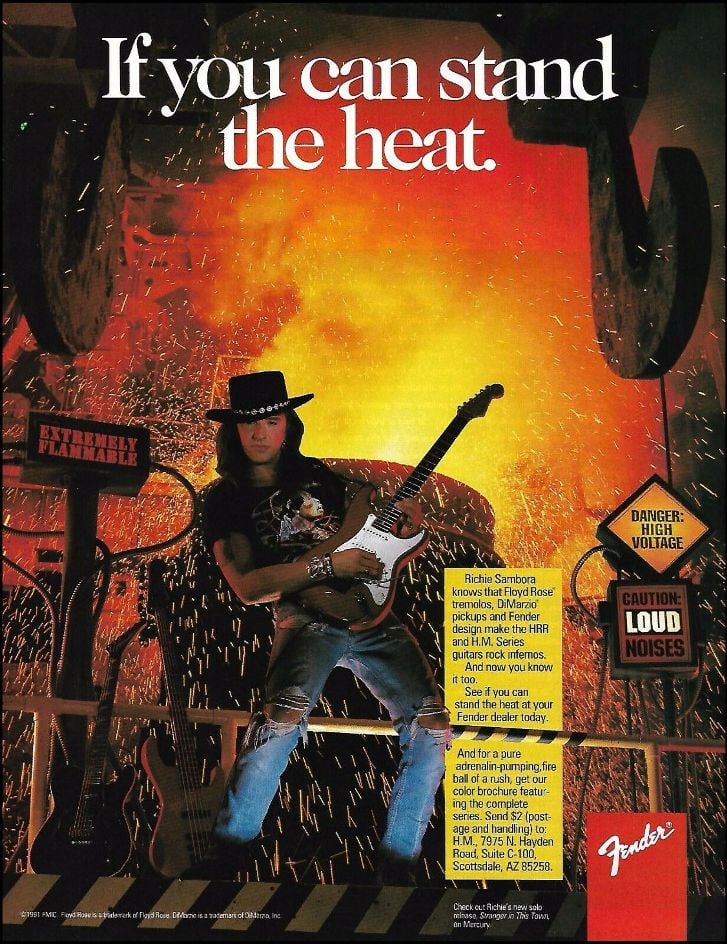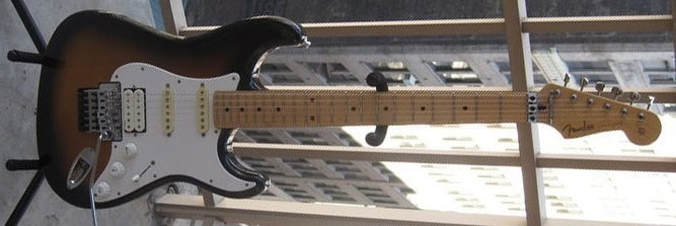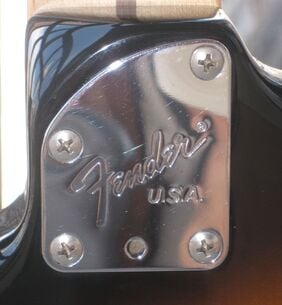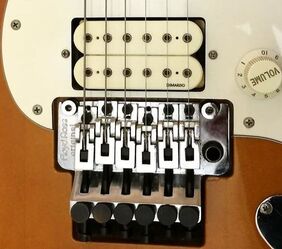REISSUES AND COLLECTABLES
|
After the Squier brand was moved from Japan to Korea, Fender Japan continued to export vintage reissue guitars that, in the beginning, were included in the Reissue Series or in the Limited Edition Series. In 1996 they were brought together in the Collectables Series (sometimes called Collectibles). Qualitatively far different from the JV’s, they were “Fender” guitars, usually with a basswood body and Reissue Strat pickups with staggered Alnico V poles, and, differently from the first American Vintage Stratocasters, were not finished with nitro. They should not be confused with the many domestic vintage models made in Japan, of which there were lots of models with different specs.
The '68 Stratocaster was also called “Hendrix Stratocaster” because of its maple cap and the large headstock with Transition Logo, just like the guitars that Jimi Hendrix often played. The tuning machines were Gotoh Kluson style, slotted, and it had two wing string trees. Although the first models had a basswood body, the ash has been used since 1996. This guitar should not be confused with other domestic Stratocasters, such as the ST68-85TX, whose characteristics were very different: alder body, Texas Special pickups, Vintage “F” tuner machines, black CBS logo and only one string tree. |
The 50's Stratocaster and the 60's Stratocaster, made between 1989 and 1998, were guitars with basswood bodies which didn’t reproduce the Stratocasters of a specific year, but expressed the general characteristics of a period. So they had, respectively, an eight screws pickguard and a fretted maple neck, or an eleven screws pickguard and a rosewood fretboard.
The '72 Stratocaster, made between 1992 and 1996, had a big headstock with the Black CBS Logo and the decal “STRATOCASTER” written in large letters, a bullet truss rod, two butterfly string trees and “G” Gotoh tuning machines. Available in Natural or Vintage White finish, it had an "F" 3-bolt neck plate with micro tilt.
The '72 Stratocaster, made between 1992 and 1996, had a big headstock with the Black CBS Logo and the decal “STRATOCASTER” written in large letters, a bullet truss rod, two butterfly string trees and “G” Gotoh tuning machines. Available in Natural or Vintage White finish, it had an "F" 3-bolt neck plate with micro tilt.
HOT RODDED REISSUE SERIES
Given the success of the increasingly aggressive sounds, in 1990 Fender decided to export from Japan a new series of Stratocasters, with classic contour, but “hotter”. The Hot Rodded Reissue Series Stratocasters, made famous by Richie Sambora, were characterized by the presence of a Di Marzio humbucker with coil tapping at the bridge, twenty-two frets, asymmetric neck plate (strangely, “FENDER U.S.A.” engraved), and a double locking tremolo: at first Kahler Steeler, then Floyd Rose Original.
|
“The hottest new achievement from the Kahler design team. This double-locking bridge has the popular feel and appearance of most Floyd Rose licensed bridge systems. But only Kahler's all steel construction has a pre-stressed harmonically tuned plate, slotted string locks bolts for easy string change, and saddles which are far denser than industry standard. This creates a stabilized point for the strings to transmit their vibrations clearly through your guitar. The Steeler! Can your playing afford to live without it?”, as an advertisement of the time said.
|
At 1991 NAMM Fender announced that Floyd Rose, the inventor of the locking tremolo system, joined exclusively with Fender, and the Steeler was replaced by the Floyd Rose Original Bridge: “There's a real difference between a tremolo designed by Floyd Rose himself, and the rest. The most popular tremolo bridge ever created. Its case-hardened steel construction delivers incredibly full tonal response.”
The series, consisting of the HRR '50s Stratocaster (with maple fretboard) and the HRR '60s Stratocaster (with rosewood fretboard), remained in production until 1993.
The series, consisting of the HRR '50s Stratocaster (with maple fretboard) and the HRR '60s Stratocaster (with rosewood fretboard), remained in production until 1993.
Antonio Calvosa
